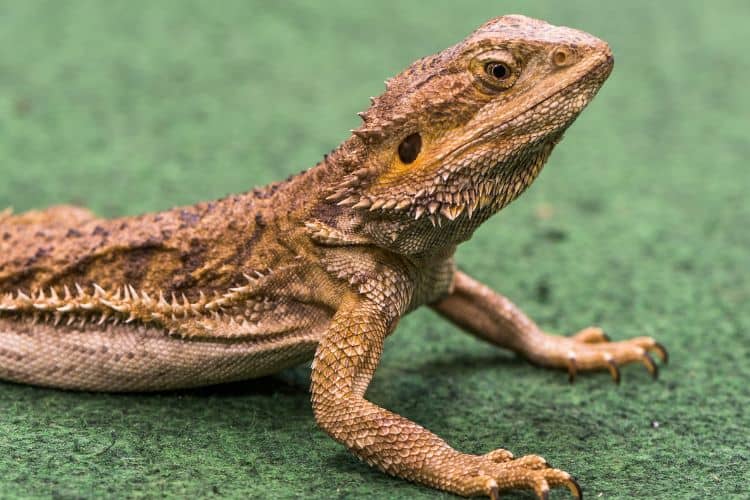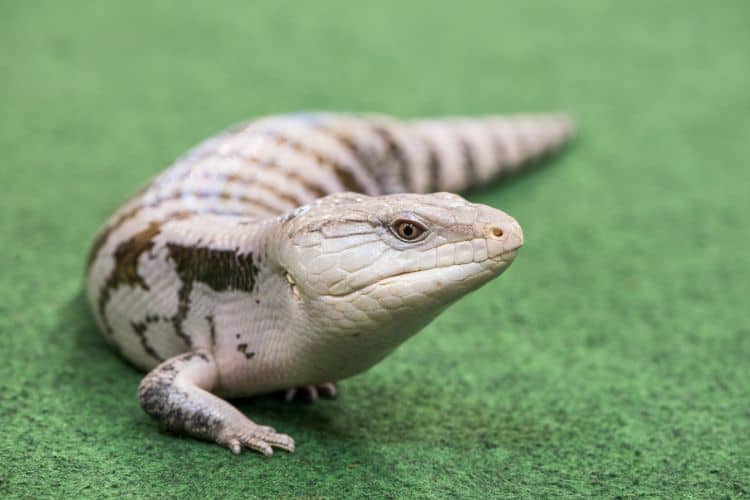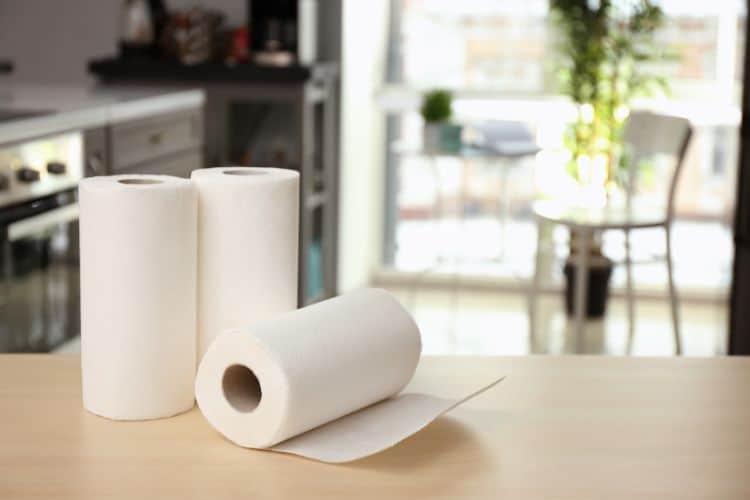So, you want to get a leopard gecko? Wise choice! It’s low-maintenance and won’t cause much trouble. What do you plan on using as a substrate for their cage, though?
You probably heard that slate tiles and excavator clay are viable options, but reptile carpet seems to be quite a popular substrate. So you ask, is reptile carpet good for leopard geckos?
If you want to know the answer, you’ve come to the right place!
The Benefits of Using Reptile Carpets for Leopard Geckos
Let’s see what makes a reptile carpet such an attractive substrate in the leopard gecko market.
Low Risk of Impaction
Impaction is a common concern among leopard gecko owners. It happens when your gecko ingests part of the substrate, causing a blockage in its digestive system. That can lead to serious health issues, like constipation, loss of appetite, and lethargy.
Impaction is mostly associated with loose substrates, like
Well, you don’t have to worry about that with reptile carpets. They offer a solid, stable base for leopard geckos, reducing the risk of accidental ingestion.
Of course, that doesn’t mean there’s zero risk of impaction. It’s just less likely for your gecko to take a bite of a reptile carpet than it is to ingest other types of substrate.

Safe Bellies
Although the underside of reptile carpets is solid and steady, the surface is soft and gentle. That means you don’t have to worry about your leopard geckos scraping their bellies as they move around their enclosure.
That’s a strong selling point because leopard geckos have soft bellies. So, a rough/abrasive surface can cause more damage than you think.
Check Out: Pink Leopard Gecko
Washability
Paper towels are viable substrates, but they’re not washable. If they gather too much dirt, you’ll have to throw them away and buy new ones.
Not with reptile carpets, though! You can just throw them in the washing machine and let it do its business.
It doesn’t sound like that much of an advantage, but it’ll save you a lot of money in the long run, as you won’t have to buy substrate in bulk anymore.
Helpful Tip: Buy two reptile carpets so you can use one when you wash the other.
The Downsides of Using Reptile Carpets for Leopard Geckos
Despite all the value they offer, reptile carpets aren’t perfect substrates by any means. You don’t want to buy them before knowing the trouble they might give you.
Harbors Bacterial Growth
Yes, as convenient and versatile as they are, the fibers of reptile carpets are like waste magnets. They create a perfect ground for bacteria growth, which will force you to clean them too often.
One of leopard geckos’ strong selling points is that they’re easy to care for, but frequent cleaning doesn’t scream low maintenance. It’s also not a healthy environment for your gecko to live in.
When these reptiles lunge to eat an insect inside their cage, they might ingest some of the bacteria in the carpet. You can probably tell that would cause several intestinal issues.
That’s not even the worst part!
When your gecko defecates, that waste doesn’t just sit on the carpet. It seeps through the fibers to the glass floor below, creating a thin layer of bacteria called ‘biofilm’.
That biofilm can be a hassle to remove without professional help and could spell trouble for your gecko’s health if left unchecked.

Hard to Clean
Just because a reptile carpet is washable doesn’t mean it’s easy to clean. That type of leopard gecko substrate is made with artificial, high-tech fibers.
That makes it more absorbent, and not in a good way. It retains stains, moisture, and dirt in the small gaps between these fibers.
If you want to clean it, you’ll have to go deep within these gaps, which is no walk in the park, even for washing machines. The worst part? The longer you wait, the harder the stains will be to clean.
Causes Claw Damage
Reptile carpets may offer a soft and comfortable surface for your leopard gecko to walk on, but that doesn’t come without a price. As convenient as it is, that lack of abrasiveness allows geckos’ nails to grow excessively.
While that sounds like an advantage at first glance, it makes them susceptible to snagging in the fibers of your carpet.
That’s even more plausible when the carpet ages, as more fibers start sticking out, increasing the likelihood of snagging.
Not only is that uncomfortable for your gecko, but it can also lead to claw damage over time.
What Other Vital Substrate Choices Are on the Market?
Now that you understand that a reptile carpet isn’t an ideal habitat for leopard geckos, let’s see what other options you have.
Bioactive Substrate
Consisting of gravel, soil, clay mixtures, and live plants, bioactive substrates aim to create a realistic simulation of leopard geckos’ natural habitat.
Cover your enclosure with bioactive substrate, and you’ll see your leopard gecko embracing its natural behavior, exploring, digging, and burrowing all over the place.
Also Read: The Colorful World of the Tangerine Leopard Gecko
Ceramic Tiles
Ceramic tiles provide the low-maintenance environment you’re looking for in a leopard gecko home. They don’t get as dirty as reptile carpets because they’re not made of fibers that trap dirt within their gaps.
They offer a smooth surface that can be easily wiped down whenever needed, and you don’t have to worry about impaction risks. Have you ever seen a leopard gecko eating ceramic tiles?
Unfortunately, they tend to be a bit pricey, so there’s that. Is tile an ideal substrate? No. Is it one of the most vital ones? Definitely!
Paper Towels

Using paper towels as substrate might sound weird for new reptile owners, but you’d be surprised how effective they are.
Their smooth texture guarantees they won’t hurt your gecko’s belly and claws. If you have a baby gecko, paper towels are your best option.
Juveniles usually create a lot of waste, but you can easily clean the enclosure by throwing the paper towels out. They’re not the most natural substrate on the market, but they get the job done.
Wrapping Up
The next time one of your friends comes to you asking: “Is reptile Carpet good for leopard geckos?” You know what to say.
Although it offers a ton of value, the cons outweigh the pros in the long run. So, it’s not the best substrate to simulate leopard geckos’ natural environment.
You won’t have to search for long to find other viable options, though, as there are plenty of alternatives on the market.

